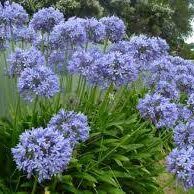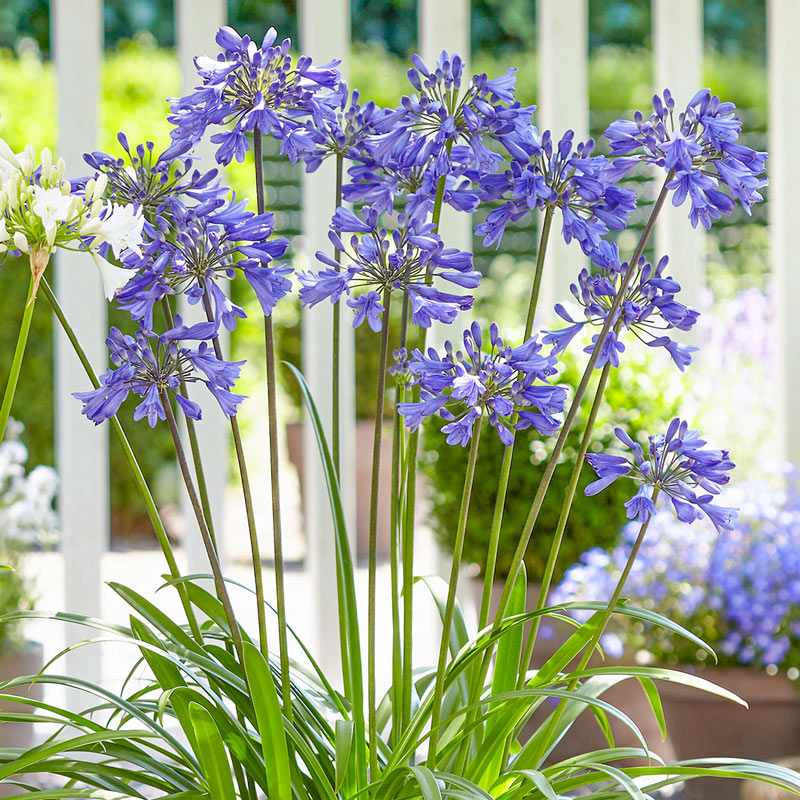Usual Agapanthus Troubles and Exactly How to Resolve Them
Usual Agapanthus Troubles and Exactly How to Resolve Them
Blog Article
The Ultimate Agapanthus Handbook: Whatever You Required to Learn About Growing, Keeping, and Appreciating These Gorgeous Blossoms
Within the realm of gardening, few flowers exude the style and charm rather like agapanthus. The Ultimate Agapanthus Handbook offers as a detailed guide to assist you browse the globe of these sensational blossoms, covering everything from choosing the best range for your garden to grasping the art of upkeep and care.

Agapanthus Varieties: Selecting the Right One
When choosing an Agapanthus selection, it is important to take into consideration factors such as bloom strength, color, and height to guarantee the ideal suitable for your yard. The bloom color of Agapanthus ranges from shades of purple and blue to white and even bi-colored blossoms, supplying a wide array of options to enhance your yard's color design. In addition, height is an essential element to consider as Agapanthus varieties can range from dwarf ranges that remain under a foot tall to bigger varieties that can rise to four feet in elevation. Recognizing the height possibility of your chosen range is essential for appropriate placement within your garden landscape. Furthermore, hardiness must be thought about to make certain the Agapanthus selection can prosper in your certain climate problems. By meticulously evaluating these aspects, you can pick an Agapanthus selection that not just improves the visual allure of your yard but also flourishes in its atmosphere.

Growing Tips for Healthy Growth
To make sure effective growth and advancement of Agapanthus plants, proper growing methods are essential for developing a healthy foundation. Begin by selecting an appropriate place that receives full sunlight to partial color, as Agapanthus prospers in these conditions. The dirt should be well-draining to avoid waterlogging, which can cause root rot. Before planting, modify the soil with organic issue like garden compost to enhance its fertility and structure.
When growing Agapanthus, make sure the crown-- where the origins satisfy the stems-- is at soil level (Agapanthus). Water freshly grew Agapanthus deeply to help the origins establish themselves.
Regular watering is critical, particularly throughout the expanding season, to promote healthy and balanced blooming. Fertilize Agapanthus in the springtime with a balanced plant food to sustain robust growth and lively blooms. By adhering to these growing ideas, you can appreciate attractive and prospering Agapanthus plants in your yard.
Vital Care and Maintenance Practices
Having actually developed a strong foundation through appropriate growing methods, the next essential action for making sure the health and wellness and vigor of Agapanthus plants lies in applying essential care and upkeep techniques. Normal watering is vital, particularly during the expanding season, to keep the soil consistently moist however not saturated. Mulching around the base of the plants can aid keep wetness and suppress weeds. Agapanthus plants gain from a balanced plant food application in the spring to support healthy growth and vibrant blossoms.
Deadheading spent blossoms advertises continual flowering and stops the plant from expending energy on seed manufacturing. Additionally, splitting congested globs every few years revitalizes the plants, advertises better blooming, and prevents overcrowding. Agapanthus plants are normally low-maintenance but might benefit from regular examination for conditions and bugs. Snails and page slugs can be regulated via hand-operated removal or eco pleasant pest control methods. By adhering to these crucial treatment and maintenance practices, gardeners can appreciate the beauty of Agapanthus plants year after year (Agapanthus).
Making The Most Of Blossoms: Feeding and Watering
Applying a calculated feeding and watering routine is important for taking full advantage of the growing capacity of Agapanthus plants throughout the growing period. Agapanthus plants require a balanced strategy to feeding and watering to thrive and generate a wealth of stunning blossoms.
In terms of watering, Agapanthus plants choose consistently wet but well-drained dirt. By complying with a constant feeding and watering regular, you can guarantee that your Agapanthus plants thrive and generate a remarkable screen of blossoms.
Innovative Ways to Enjoy Agapanthus Flowers
Cut Agapanthus flowers can be set up in a vase on their combined or own with various other corresponding flowers to include a touch of style to any space. Planting Agapanthus in collections along borders or paths can create a striking visual impact in your garden. In addition, you can use Agapanthus flowers to add a pop of color to your patio or balcony by placing potted plants tactically to brighten up your outside living areas.

Verdict
In conclusion, agapanthus flowers are a lovely enhancement to any yard, with a selection of varieties to choose from. Obtain creative with just how you delight in agapanthus, whether in bouquets, setups, or as a focal factor in your yard.

Agapanthus plants benefit from a continue reading this balanced fertilizer application in the springtime to support healthy development and vivid blossoms.
Implementing a tactical feeding and watering regimen is crucial for taking full advantage of the blooming potential of Agapanthus plants throughout the expanding season. Agapanthus plants call for a well balanced approach to feeding and watering to flourish and generate an abundance of attractive blossoms. Additionally, you can make use of Agapanthus flowers to include a pop of color to your patio or porch by useful content putting potted plants strategically to brighten up your outdoor living areas.
Report this page